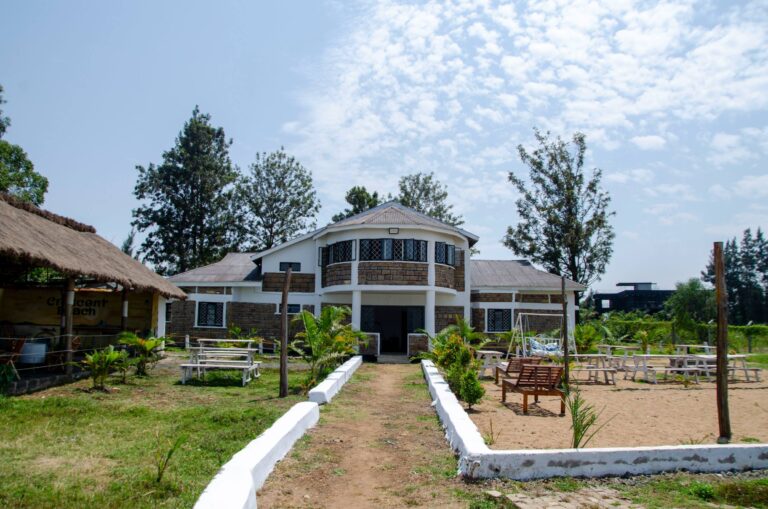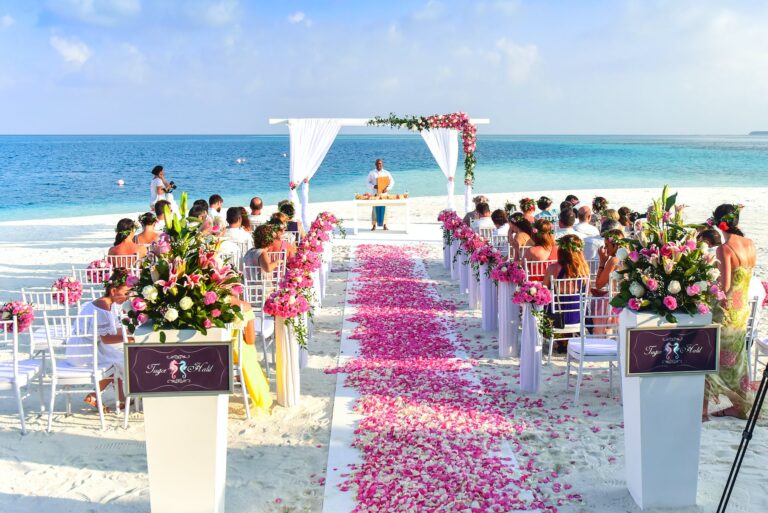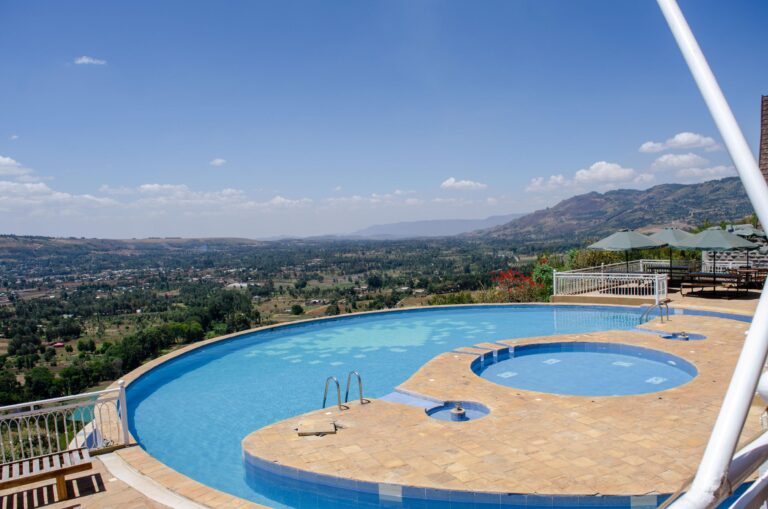Kenya, a land of breathtaking landscapes and incredible biodiversity, is a haven for wildlife photographers. With its rich array of ecosystems, ranging from savannahs to forests and mountain ranges, Kenya provides unparalleled opportunities to capture the beauty and drama of the natural world. This article explores top Kenya wildlife photography destinations, showcasing the unique experiences that await photographers.
7 Best Kenya Wildlife Photography Destinations
1. Masai Mara National Reserve: A Photographer’s Paradise
The Masai Mara is perhaps the most iconic wildlife photography destination in Kenya. Renowned for its abundant wildlife and sweeping grasslands, it offers some of the most dramatic scenes nature has to offer.
Why Choose Masai Mara for Wildlife Photography?
- The Great Migration: The annual migration of over 1.5 million wildebeests, zebras, and gazelles is a spectacle that attracts photographers from around the world. The river crossings, often accompanied by dramatic predator-prey interactions, are a dream for action photographers.
- Big Cats: The Mara is home to lions, cheetahs, and leopards, offering countless opportunities to capture majestic feline portraits.
- Golden Light: The reserve’s vast plains allow for unobstructed sunrise and sunset shots, creating stunning compositions with warm tones.
2. Amboseli National Park: The Land of Giants
Amboseli National Park, located at the foot of Mount Kilimanjaro, is famous for its large elephant herds and iconic landscapes.
Key Photography Highlights in Amboseli:
- Elephants and Mount Kilimanjaro: Amboseli is one of the best places to photograph elephants, often framed against the backdrop of Africa’s tallest mountain. This unique setting creates compositions that are both majestic and serene.
- Wetlands and Reflections: The park’s swamps and wetlands provide excellent opportunities for reflection photography, capturing wildlife mirrored in the water.
- Birdlife: With over 400 bird species, Amboseli is also a fantastic destination for bird photographers.
3. Lake Nakuru National Park: A Haven for Bird Enthusiasts
Lake Nakuru, located in the Rift Valley, is renowned for its birdlife, particularly flamingos that create a vibrant pink shoreline.
What Makes Lake Nakuru a Must-Visit for Photographers?
- Flamingos: Depending on water levels and algae concentration, the lake can host thousands of flamingos, creating breathtaking panoramas.
- Rhinoceroses: Lake Nakuru is one of Kenya’s best spots to photograph both black and white rhinos in their natural habitat.
- Acacia Woodlands: The park’s forested areas provide unique settings for photographing leopards and other animals.
4. Samburu National Reserve: The Unique Five
Located in northern Kenya, Samburu National Reserve is characterized by its arid landscapes and unique wildlife species not commonly found elsewhere in the country.
Top Photography Features in Samburu:
- The Samburu Special Five: Photographers can capture Grevy’s zebras, Somali ostriches, gerenuks, beisa oryxes, and reticulated giraffes.
- Ewaso Ng’iro River: The river attracts wildlife, offering opportunities to photograph animals as they drink, bathe, or cross.
- Cultural Elements: Samburu’s traditional communities add a cultural photography angle, showcasing the vibrant attire and traditions of the Samburu people.
5. Tsavo National Parks: Untamed Wilderness
Tsavo East and Tsavo West National Parks together form one of the largest wildlife conservation areas in Kenya.
Photography Opportunities in Tsavo:
- Red Elephants: Tsavo’s elephants often appear red due to the park’s distinctive red soil, creating striking images.
- Lava Fields: The rugged landscapes, including the Shetani Lava Flow, offer dramatic backdrops for wildlife photography.
- Lions and Predators: Tsavo is home to the famous “Man-Eaters of Tsavo” lions, providing an opportunity to photograph these legendary creatures.
6. Lake Naivasha: A Photographer’s Oasis
Lake Naivasha, a freshwater lake in the Rift Valley, is a serene destination known for its diverse flora and fauna.
Key Highlights for Photographers:
- Hippos: The lake is home to numerous hippos, offering close-up photography opportunities.
- Birdlife: Pelicans, cormorants, and kingfishers are abundant, making it a paradise for bird photographers.
- Crescent Island: The island allows for walking safaris, giving photographers the rare chance to capture wildlife on foot.
7. Mount Kenya National Park: Alpine Photography
Mount Kenya, the second-highest peak in Africa, offers a completely different environment for wildlife photography.
What to Photograph on Mount Kenya:
- Unique Wildlife: Look for high-altitude species such as rock hyraxes and the Mount Kenya mole rat.
- Dramatic Landscapes: The park’s glacial valleys, peaks, and tarns create stunning compositions.
- Sunrises and Sunsets: The view of the sun rising or setting over the peaks is a must-capture for landscape photographers.
Tips for Wildlife Photography in Kenya
To make the most of your wildlife photography trip, consider the following tips:
- Use the Right Gear: Bring a telephoto lens (300mm or more) for close-ups of wildlife, and a wide-angle lens for landscapes.
- Patience is Key: Great shots often require waiting for the perfect moment.
- Time Your Visits: Early mornings and late afternoons are ideal for both lighting and wildlife activity.
- Respect Wildlife: Maintain a safe distance and avoid disturbing animals for a shot.
- Hire a Guide: Local guides can help you find the best spots and identify wildlife behaviors.
Why Choose Joe Photography and Safaris?
At Joe Photography and Safaris, we specialize in creating tailor-made photography experiences for clients visiting Kenya. Our expertise includes:
- Customized itineraries to Kenya’s top photography destinations.
- Professional guides with knowledge of wildlife and photography.
- Support with equipment rentals and logistical arrangements.
Whether you’re a seasoned professional or an enthusiastic amateur, our tours are designed to help you capture the beauty and diversity of Kenya’s wildlife.
Kenya is a photographer’s dream, offering endless opportunities to capture nature’s wonders. From the rolling plains of the Masai Mara to the dramatic peaks of Mount Kenya, each destination offers something unique. Plan your next safari with Joe Photography and Safaris, and let Kenya inspire your lens like never before.
What to Bring in Your Kit Bag for a Wildlife Photography Safari in Kenya
When embarking on a wildlife photography safari in Kenya, having the right equipment and accessories in your kit bag can make a significant difference in capturing those perfect shots. Here’s a comprehensive list of what to include:
1. Camera and Lenses
Primary Camera Body:
- Bring at least one reliable DSLR or mirrorless camera body capable of high-resolution images.
Lenses:
- Telephoto Lens (200mm to 600mm): Essential for capturing distant wildlife.
- Wide-Angle Lens (16mm to 35mm): Perfect for landscapes and environmental shots.
- Mid-Range Zoom (24mm to 70mm): Great for versatility when photographing wildlife in context.
Backup Camera:
- A second camera body can save you if your primary camera malfunctions or provide quick access to different lenses.
2. Tripod or Monopod
- A sturdy tripod is ideal for landscapes or low-light photography.
- A monopod is a lighter option for stabilizing telephoto lenses when tracking moving subjects.
3. Memory and Storage
- Memory Cards: Carry several high-capacity, high-speed cards (e.g., 64GB or 128GB) to avoid running out of space.
- Portable External Drive: For backing up images at the end of each day.
- Card Reader: To transfer files to your laptop or storage device efficiently.
4. Power Supply
- Batteries: Bring multiple fully charged batteries, as you may be in the field for extended periods.
- Portable Power Bank: Useful for charging batteries or other devices while on the move.
- Universal Plug Adapter: Kenya uses Type G plugs with a voltage of 240V.
5. Camera Accessories
- Lens Filters: Polarizing filters for reducing glare and enhancing colors, and UV filters for lens protection.
- Lens Hood: Reduces lens flare and protects against accidental bumps.
- Rain Covers: Protect your gear from sudden rain or dust.
- Cleaning Kit: Include a blower, microfiber cloths, and lens cleaning solution to keep your equipment spotless.
6. Photography Essentials
- Bean Bag: A versatile stabilizer for shooting from vehicles.
- Remote Shutter Release: Useful for long exposures and minimizing camera shake.
- Notebook or Journal: Record locations, conditions, and settings for reference later.
7. Personal Gear
- Clothing: Neutral, earth-toned clothing for blending into the environment. Include layers for cool mornings and evenings.
- Hat and Sunglasses: For protection from the sun.
- Insect Repellent: To ward off mosquitoes and other insects.
- Comfortable Shoes: Sturdy footwear for walking or hiking.
8. Optional Equipment
- Drone: If permitted, a drone can provide stunning aerial perspectives. Be sure to check local regulations.
- GoPro or Action Camera: Ideal for capturing behind-the-scenes footage.
- Field Guidebook: To help identify wildlife and birds during your safari.
9. Snacks and Water
- Snacks: Keep energy levels up during long shoots.
- Water Bottle: Stay hydrated, especially in hot weather.
10. Documentation and Essentials
- Photography Permits: Some parks may require special permits for professional photography.
- Insurance Documents: Protect your expensive equipment.
- Park Maps and Itineraries: Ensure you know your planned routes and locations.
Best Activities for Photography Experiences in Kenya National Parks
Kenya, renowned for its unparalleled wildlife and scenic landscapes, offers an array of photography opportunities. Whether you’re a professional photographer or a hobbyist, engaging in the right activities within Kenya’s national parks can help you capture breathtaking shots. Here’s a guide to the best activities for photography enthusiasts in Kenya’s national parks.
1. Game Drives
Game drives are the quintessential way to experience and photograph Kenya’s diverse wildlife.
- Morning Game Drives: Early hours provide golden light and active wildlife.
- Evening Game Drives: Capture wildlife in dramatic low-light conditions, perfect for silhouettes.
- Specialized Photography Safaris: Book photography-focused tours with guides who understand optimal positioning for shots.
Top Locations: Masai Mara, Amboseli National Park, and Tsavo National Park.
2. Walking Safaris
Walking safaris offer an intimate connection with nature, providing unique angles and perspectives.
- Macro Photography: Focus on insects, plants, and textures often overlooked during vehicle safaris.
- Close-Up Wildlife Shots: With the guidance of experienced rangers, you can capture animals safely from ground level.
Top Locations: Lewa Wildlife Conservancy, Amboseli, and Laikipia.
3. Balloon Safaris
Hot air balloon safaris offer photographers the chance to capture sweeping aerial shots of Kenya’s iconic landscapes.
- Golden Hour Shots: Flights typically begin at sunrise, providing soft, golden light.
- Unique Perspectives: Photograph vast herds of wildebeest, zebras, or elephants from above.
Top Locations: Masai Mara, Amboseli, and the Great Rift Valley.
4. Bird Watching and Photography
Kenya boasts over 1,100 bird species, making it a paradise for bird photographers.
- Specialized Birding Safaris: Guides can help you locate rare and endemic species.
- Key Equipment: A telephoto lens (400mm or more) is essential for capturing details.
Top Locations: Lake Nakuru National Park, Lake Naivasha, and Kakamega Forest.
5. Night Game Drives
Night safaris offer a chance to photograph nocturnal wildlife and behaviors rarely seen during the day.
- Spotlighting: Guides use spotlights to illuminate animals, creating dramatic shots.
- Rare Wildlife: Capture predators like leopards, hyenas, and owls.
Top Locations: Ol Pejeta Conservancy, Mara Naboisho Conservancy, and Samburu National Reserve.
6. Water-Based Photography
Kenya’s water bodies provide a tranquil setting for stunning wildlife and landscape shots.
- Boat Safaris: Capture hippos, crocodiles, and waterbirds up close.
- Reflection Shots: Use the calm waters for creative reflection photography.
Top Locations: Lake Naivasha, Lake Victoria, and Lake Baringo.
7. Cultural Photography Experiences
Photograph Kenya’s rich cultural heritage by engaging with local communities.
- Masai and Samburu Tribes: Capture their vibrant attire, dances, and daily life.
- Local Markets: Showcase Kenya’s bustling market scenes and vibrant colors.
Top Locations: Masai Mara, Samburu, and Turkana.
8. Seasonal Wildlife Events
Kenya’s seasonal wildlife events provide rare and dramatic photographic opportunities.
- The Great Migration: Capture the mass movement of wildebeest and zebras crossing the Mara River, often pursued by crocodiles and lions.
- Calving Season: Focus on newborn animals and predator-prey interactions.
Top Locations: Masai Mara and Serengeti Ecosystem.
9. Landscape Photography Expeditions
Kenya’s diverse terrain offers endless opportunities for landscape photographers.
- Iconic Views: Capture Mount Kilimanjaro from Amboseli or the dramatic gorges of Hell’s Gate National Park.
- Sunsets and Sunrises: Use Kenya’s expansive skies for stunning golden hour shots.
Top Locations: Amboseli National Park, Samburu, and Hell’s Gate.
10. Conservation Photography Projects
Engaging in conservation-focused activities offers ethical and impactful photography opportunities.
- Wildlife Rehabilitation Centers: Document efforts to protect endangered species like rhinos and elephants.
- Volunteer Projects: Participate in and photograph activities that support wildlife conservation.
Top Locations: Ol Pejeta Conservancy and David Sheldrick Wildlife Trust.
11. Seasonal Flora and Fauna Photography
Kenya’s varying climates produce seasonal blooms and unique fauna photography opportunities.
- Wildflowers: Photograph blooms against Kenya’s dramatic backdrops.
- Migratory Birds: Capture the influx of birds during migration seasons.
Top Locations: Aberdare National Park and Lake Nakuru.
Who Can Book Kenya Wildlife Photography Destinations with Joe Photography and Safaris?
At Joe Photography and Safaris, we cater to a wide range of clients looking to explore Kenya’s breathtaking wildlife and landscapes while capturing stunning photographs. Whether you’re a seasoned photographer, an aspiring amateur, or just someone seeking a unique safari experience, we’ve got you covered.
1. Professional Photographers
Professional wildlife photographers seeking iconic destinations like the Maasai Mara, Amboseli, or Samburu can rely on us to provide tailored itineraries. Our expert guides know the best spots and times for capturing Kenya’s diverse wildlife and scenic beauty.
2. Aspiring Photographers and Enthusiasts
If you’re passionate about photography and want to learn while exploring, our tours are perfect. We provide guidance on wildlife photography techniques, making your experience both educational and adventurous.
3. Families and Groups
Looking for a unique family or group adventure? Our photography safaris are a fantastic way to bond while experiencing Kenya’s natural wonders. We ensure that all age groups are catered for with fun and engaging activities.
4. Solo Travelers
Traveling alone? Join one of our group tours or opt for a private experience. We provide safe, friendly, and well-organized trips that allow solo travelers to fully immerse themselves in Kenya’s wildlife photography.
5. Corporate Groups
Companies looking for team-building experiences or rewarding employees can book our safaris. A wildlife photography tour offers a mix of relaxation, adventure, and creativity.
Contact Joe Photography and Safaris
📞 Phone: +254 717 563 531
📍 Location: Kenya
Whether you’re a professional photographer, a nature enthusiast, or someone seeking a unique safari, Joe Photography and Safaris is here to make your experience unforgettable. Book with us today!
FAQs on Kenya Wildlife Photography Destinations
What are the best wildlife photography destinations in Kenya?
Kenya is home to several iconic wildlife photography destinations, including:
Maasai Mara: Famous for the Great Migration and abundant wildlife.
Amboseli National Park: Known for elephants and stunning views of Mount Kilimanjaro.
Samburu National Reserve: Ideal for capturing unique species like the Grevy’s zebra and reticulated giraffe.
Lake Nakuru National Park: Perfect for photographing flamingos and rhinos.
Tsavo National Parks: Renowned for diverse landscapes and large herds of elephants.
When is the best time for wildlife photography in Kenya?
The best time is during the dry season (June to October), when wildlife congregates around water sources, and the Great Migration occurs in the Maasai Mara. The short rainy season (November to December) is also great for lush landscapes and vibrant skies.
What should I bring for a wildlife photography safari in Kenya?
Key items include:
A DSLR or mirrorless camera with telephoto and wide-angle lenses.
Extra batteries and memory cards.
A sturdy tripod or monopod.
Binoculars for spotting distant animals.
Weather-appropriate clothing and a dust-proof bag for equipment.
Are photography guides available during the safari?
Yes, Joe Photography and Safaris provides experienced guides who understand the behavior of animals and know the best spots for capturing stunning photos. They also assist with photography tips and techniques for both beginners and professionals.
Can I customize my wildlife photography tour?
Absolutely! At Joe Photography and Safaris, we offer customized itineraries based on your photography goals, preferred destinations, and budget. Whether it’s a private tour or a group expedition, we tailor every detail to make your experience unique.
Contact us at +254 717 563 531 to plan your dream wildlife photography safari in Kenya!
Also Read:



